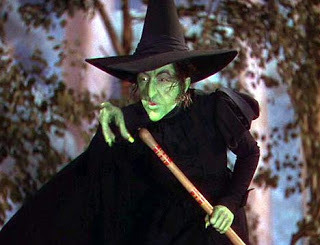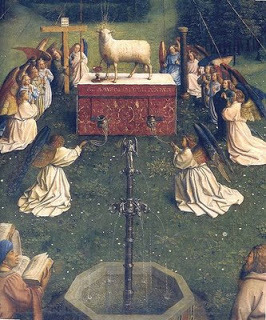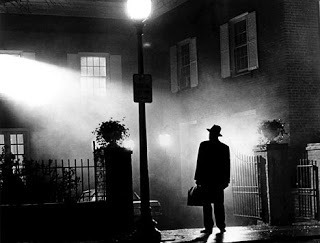Dwight Longenecker's Blog, page 330
November 1, 2011
The Day I Met a Saint

I went to India with a friend named James when we were both Anglican priests. We stayed in Calcutta for a few days before going into the Himalayas trekking, and James suggested we take a tour of Mother Teresa's homes.
So we made our way through the streets of Calcutta to the little side alleyway leading to the entrance to the Mother House. There was a little sign on the door saying, "Mother is in" or "Mother is out", and the sign said, "Mother is in".
When we went through the door a young Indian sister said, "Would you like to meet Mother?"
"Yes please!"
So we waited for a few minutes on simple wooden benches and then Mother Teresa came out and shook our hands and asked where we had come from. "Have you come to give you life in service to God's holy poor?" she asked.
I felt not too big. I had only come as a curious Protestant tourist. I was tongue tied, but James was quicker off the mark. "We've only brought you a check." he said.
She thanked us and asked another sister to show us around, so we had the tour of the Mother House, the home for the dying and then we were taken around various other homes around Calcutta.
What was it like to meet a saint? My main memory was of an intense kind of reality. Mother Teresa was a connector to another world. She was a kind of human wardrobe that leads into Narnia. Meeting her and spending time in the Mother House opened up a new dimension for me--something I had never experienced before, and this sense of reality--this new level of awareness made me feel both small and great at the same time.
Small because of my own inadequacy and frailty and sinful selfishness and stupidity in the presence of that reality, but also a great-ness, knowing that I was not only a fellow human being, and therefore had the same capacity for greatness as Mother Teresa, but also because I was her brother. I was also one of the baptized, faithful.
I also had the gifts she had, and all I had to do was say "Yes."
And that also made me feel both small and great.
Published on November 01, 2011 11:10
October 31, 2011
Reformation Day
[image error]
In celebration of Reformation Day I thought readers might like this photograph of the heirs of Luther:
That would be Lutheran bishop of Stockholm Eva Brunne on the left. Eva is in a 'registered and blessed' homosexual partnership. She and her 'partner' have a child conceived through artificial insemination.
Wasn't there another famous Eva Braun? I wonder if they are related...

In celebration of Reformation Day I thought readers might like this photograph of the heirs of Luther:
That would be Lutheran bishop of Stockholm Eva Brunne on the left. Eva is in a 'registered and blessed' homosexual partnership. She and her 'partner' have a child conceived through artificial insemination.
Wasn't there another famous Eva Braun? I wonder if they are related...
Published on October 31, 2011 13:26
The Problems with Possession
Published on October 31, 2011 08:27
Witches are Real

They don't fly on broomsticks or have green skin, ( although come to think of it one witch I knew did have a sick green-ness about the gills, but I think that's because he was a drunk) but they do cast spells and put curses on people and they do worship Satan, and don't be deceived by the 'white magic' lark. There's no such thing. All magic is black magic because of the philosophy behind it: those involved in witchcraft seek power, and anybody who seeks power for it's own sake is bad.
Think of all the wicked people who justify their quest for power by saying it is for a good cause. Almost all evil in the world is caused by people who think they're doing it for a good cause. Not just Darth Vader. Think of the Nazis who really believed the concentration camps were necessary in order to bring about a master race...see what I mean?
So witches, wicca, witchcraft--all that stuff. Yes, it's real.
Furthermore, if you invite diabolical powers into your life. Don't be surprised if they show up, and don't be surprised if, once you've opened Pandora's box you can't get the lid back on. Remember in all the fun that the purpose of Hallowe'en is to scare the spooks away--not invite them in. Dressing up as monsters has the same purpose as putting gargoyles on cathedrals--you're supposed to be scarier than the devil in order to give him the creeps and send him running. So when you carve a jack o'lantern make him scary as you can, but say a prayer as you put him out that he might keep away the real monsters of the night, and if you dress as a ghoul or a ghost or a witch or a warlock remember that you are doing so to creep them out and say a prayer of deliverance from all the dark forces of the world.
And if you come across anyone who takes witchcraft seriously tell them politely that if they summon the devil he will probably come, and that messing with the occult is the spiritual equivalent of an eight year old kid taking a five gallon can of gas into a fireworks warehouse then playing with matches.
Published on October 31, 2011 06:01
Behold the New Translation

One of the best parts of the translation of the Mass is the new invitation to communion. In the old translation the priest said, "Here is the Lamb of God who takes away the sins of the world. Happy are those who are called to his supper."
Now the priest will say, "Behold the Lamb of God. Behold him who takes away the sins of the world. Blessed are those who are called to the supper of the Lamb."
Now the quotation of John 1:29 is clearer. The words matter. "Behold" conveys a deeper meaning than the rather banal "Here is". "Behold" carries a connotation of contemplation and wonder. We say, "That is something to behold!" when confronted with a wonder or some great beauty.
"Here is" conveys no depth. Then "Behold" is repeated to bring us to wonder at the fact that the Lamb takes away the sins of the world." The fact that this statement of John the Baptist is so central gives the theological balance to those who criticize the replacement of the word "many" for "all" in the words of consecration. Both are true. Christ died for the sins of the world, but not all will receive his love.
"Blessed" instead of "Happy." "Happy is just well, happy. You can be happy by going to McDonald's for a Happy Meal. You can be happy because you slept well or you got a birthday card that day. Happy is sappy. "Blessed" on the other hand, implied God's involvement. A person is blessed by God and therefore has a reason to be happy. Blessing implies a supernatural grace received. The dumb downers will say, "'Blessed' is an archaic word. People don't know what it means!" Well teach them, but anyway, at the end of Mass everybody gets a blessing. Of course they know what 'blessing' means.
"The supper of the Lamb" instead of "his supper." "His supper" just sounds like you've been invited around to some guys house for soup and sandwiches. "Hey, come around for supper on Tuesday!" Not really. "The supper of the Lamb" carries much more meaning. First of all, "the supper of the Lamb" refers to the marriage supper of the Lamb" in the Book of Revelation. (Rev.19:7) this is the consummation of all things, and connects with the nuptial imagery in 1 Corinthians where St Paul describes the church as the Bride of Christ. The Eucharist is therefore a wedding feast at which we are joined in union with Christ the Bridegroom.
This in turn connects with the nuptial imagery in the gospels where the Lord speaks in parables of the coming of the bridegroom and refers to himself as the bridegroom who has come.
There is more: the supper of the Lamb is also a reference back to the Passover Feast--which was an archetype of the sacrifice of Christ, but also a pointer to the Eucharist and the final consummation of the marriage supper of the Lamb. The Jews referred to the Passover Lamb as "the Lamb of God" and so this language" "the supper of the Lamb" now carries all these references and meanings.
Our catechesis of the people regarding the new translation must touch on all these points so that the people will be able to "participate fully". I don't mean to be too cynical, but I fear that the trendy priests who get on their soapbox about 'full participation' will probably not touch on all these points at all, and so the 'full participation' they say they are in favor of will not have any depth, but will simply consist of putting more people in the procession and getting yet another aging parishioner to play the drums in the praise band.
I hope however, that I am being overly Eeyore-ish and that the new translation will be introduced with care and devotion and loving obedience to the mind of the church.
Published on October 31, 2011 05:41
Send my Roots Rain
Here is my latest article for National Catholic Register...on how the liturgy affects the deepest parts of our lives.
Published on October 31, 2011 05:10
October 30, 2011
Revolution or Reformation?
I knew a Catholic bishop in England who decreed that at all services where he presided there were to be no hymns written before 1965. It does not take a very clever monkey to figure out that a hymn (or anything else for that matter) is neither good nor bad just because of it's date. What the decree revealed was that the poor man suffered from the Hermeneutic of Revolution.
The Hermeneutic of Revolution is the dull perspective of the ideologue. He sees that something is wrong, and like a dunderhead, instead of fixing it he wants to break it. Like the dull boy who is frustrated by a toy he can't make work he throws it against the wall. And more often than not, if it is a living thing he wants to torture it before he kills it.
The revolutionary justifies his actions (as all ideologues do) by appealing to his vague, but lofty ideals. He wants to bring about a better world. He is not precisely sure what that better world will be. He will figure that out as he goes along, but of one thing he is certain: that the first step to the better world is to destroy the old world. The future brave new world can only be built-- according to the hermeneutic of revolution--out of the blood and ashes of the old.
The bishop in England unconsciously (I hope) followed the hermeneutic of revolution which infected the Catholic Church in the 1960's, but this revolutionary hermeneutic had a diabolical pedigree. It began in the revolution of the so-called Protestant Reformation, and continued in the revolution of secular humanism of the eighteenth century which spawned the bloodthirsty French Revolution. The ideologues continued with Marxism, Communism and Nazism--all revolutions that sought to overturn the old order in favor of a brave new world--and all ideologies which have their philosophical roots (that such revolution is possible and good) in the Protestant Revolution which destroyed Christendom.
The same negative and violent mentality--which is always dressed up in blind self righteousness and reformer's zeal--swept into the Catholic Church itself. This is why beautiful old churches were literally torn apart--venerable old images relegated to the basement, holy relics thrown in the trash, beautiful marble altars demolished, reredos smashed--all to make way for the mediocre, common and banal trash of the revolution.
This is why choirs were suddenly transformed into praise bands in the sanctuary, sisters and brothers left their communities in droves to 'find themselves'. This is why architects build churches that were intentionally brutal in design, and why others built churches with no connection with the Catholic past--actually glorying--as all revolutionaries do--in their ignorance, their violent iconoclasm and their hatred of tradition.
And what do we have to show for it all now fifty years later? What do the greying ideologues have to show for their revolution? Precious little. Collections of dog eared soft back 'hymn books' with music that is a blend of the night club and broadway show with words that sound like 1960s protest songs. The church buildings they slapped up were often badly built out of cheap materials and already, after fifty years are not only dated but dilapidated. The children the 'catechized' in emotional claptrap and social activism are now adult Catholics (if they are Catholic at all) who do not know the faith and are unable to pass it on.
The antidote is the hermeneutic of continuity. Where something is broken. We fix it. Where some group has lost their way, let them rediscover it by returning to their roots--not by re inventing themselves completely. Where the tradition has become stale, let us rediscover what it meant in the first place. Where the catechesis or moral life has become dull legalism, let the true meaning and purpose be understood and taught anew. Most of all, where the liturgy has become rote and formal and dull, let the people and the priest renew it and re-charge it with love and passion, and may the whole endeavor be inspired and energized by the Holy Spirit--a spirit that brings renewal, and true reform, but never revolution.
The Hermeneutic of Revolution is the dull perspective of the ideologue. He sees that something is wrong, and like a dunderhead, instead of fixing it he wants to break it. Like the dull boy who is frustrated by a toy he can't make work he throws it against the wall. And more often than not, if it is a living thing he wants to torture it before he kills it.
The revolutionary justifies his actions (as all ideologues do) by appealing to his vague, but lofty ideals. He wants to bring about a better world. He is not precisely sure what that better world will be. He will figure that out as he goes along, but of one thing he is certain: that the first step to the better world is to destroy the old world. The future brave new world can only be built-- according to the hermeneutic of revolution--out of the blood and ashes of the old.
The bishop in England unconsciously (I hope) followed the hermeneutic of revolution which infected the Catholic Church in the 1960's, but this revolutionary hermeneutic had a diabolical pedigree. It began in the revolution of the so-called Protestant Reformation, and continued in the revolution of secular humanism of the eighteenth century which spawned the bloodthirsty French Revolution. The ideologues continued with Marxism, Communism and Nazism--all revolutions that sought to overturn the old order in favor of a brave new world--and all ideologies which have their philosophical roots (that such revolution is possible and good) in the Protestant Revolution which destroyed Christendom.
The same negative and violent mentality--which is always dressed up in blind self righteousness and reformer's zeal--swept into the Catholic Church itself. This is why beautiful old churches were literally torn apart--venerable old images relegated to the basement, holy relics thrown in the trash, beautiful marble altars demolished, reredos smashed--all to make way for the mediocre, common and banal trash of the revolution.
This is why choirs were suddenly transformed into praise bands in the sanctuary, sisters and brothers left their communities in droves to 'find themselves'. This is why architects build churches that were intentionally brutal in design, and why others built churches with no connection with the Catholic past--actually glorying--as all revolutionaries do--in their ignorance, their violent iconoclasm and their hatred of tradition.
And what do we have to show for it all now fifty years later? What do the greying ideologues have to show for their revolution? Precious little. Collections of dog eared soft back 'hymn books' with music that is a blend of the night club and broadway show with words that sound like 1960s protest songs. The church buildings they slapped up were often badly built out of cheap materials and already, after fifty years are not only dated but dilapidated. The children the 'catechized' in emotional claptrap and social activism are now adult Catholics (if they are Catholic at all) who do not know the faith and are unable to pass it on.
The antidote is the hermeneutic of continuity. Where something is broken. We fix it. Where some group has lost their way, let them rediscover it by returning to their roots--not by re inventing themselves completely. Where the tradition has become stale, let us rediscover what it meant in the first place. Where the catechesis or moral life has become dull legalism, let the true meaning and purpose be understood and taught anew. Most of all, where the liturgy has become rote and formal and dull, let the people and the priest renew it and re-charge it with love and passion, and may the whole endeavor be inspired and energized by the Holy Spirit--a spirit that brings renewal, and true reform, but never revolution.
Published on October 30, 2011 14:11
October 28, 2011
Chust for Nice
Published on October 28, 2011 14:34
Little Big Men

SS. Simon and Jude are the last two apostles on the list (before Judas Iscariot that is) and Peter comes first. I guess they put them in order of priority because poor old Simon and Jude don't get much more of a mention. The old stories say they ended up preaching the gospel in Persia, which is modern day Iran, and who would much want to go there I wonder?
Then Jude has the glorious ignominy of being patron saint of lost causes, or would that be 'last' causes since he's mentioned last in the list?
Fact of the matter is, they were still apostles, and that means they were twelve of the greats, and it reminds us that not all the 'greats' are great. Many of them are little. Go to Rome and see the gigantic and majestic statues of St Peter and St Paul. Where are Simon and Jude? I guess they must be there somewhere--maybe up on top of the porticos or in some obscure corner, and who goes there to find their statues?
But for my money, they're the kind of guys I like. I like to think that they were the faithful quiet ones. They just got on with the job of preaching the gospel. They went out to preach and heal and love people and get killed for it just like the others, but they didn't get famous. They didn't write lots of books (except for that little one that bears the name of Jude) and if anybody did know them they probably got them mixed up with the other more famous apostles who had the same names:
"Ooooh! You're the Apostle Peter!! Love your work!!...Oh. You're the other one? Never heard of you..."
or
"Ooooh! Mummy, look it's that nasty Judas Apostle. But I thought he hung himself and his guts spilled out and what's he doing here then? Oh. He's the other one. The hopeless cause one. Oh."
But I like them, just like I like the people who aren't such brilliant and radiant success stories in life. In fact, I'm tired of the whole American, big, shiny 'success' thing, and I'm really, really tired of when we translate that cultural fixation into religious terms and think we're big wonderful religious successes too when we do everything right and plaster on the shiny smile.
I don't mind the successful folks. It's just that I think they can probably look after themselves well enough and don't need much help. The people I really find attractive, on the other hand, are the ones who are just faithful and quiet and true and never make waves, but just get on and do the job. I like the little guys. I like the little gals. I like them because they're not actually little. They're big.
So give me the little way, and let me remind myself and others that Jesus said, "Unless you become like a little child you cannot enter the kingdom." It wasn't that he said, "The little way is one way if you want to follow it."
He said, "It is the only way." So. St Simon the Unknown and St Jude the Obscure--little big men: Ora pro nobis.
Published on October 28, 2011 13:28
Dwight Longenecker's Blog
- Dwight Longenecker's profile
- 80 followers
Dwight Longenecker isn't a Goodreads Author
(yet),
but they
do have a blog,
so here are some recent posts imported from
their feed.





